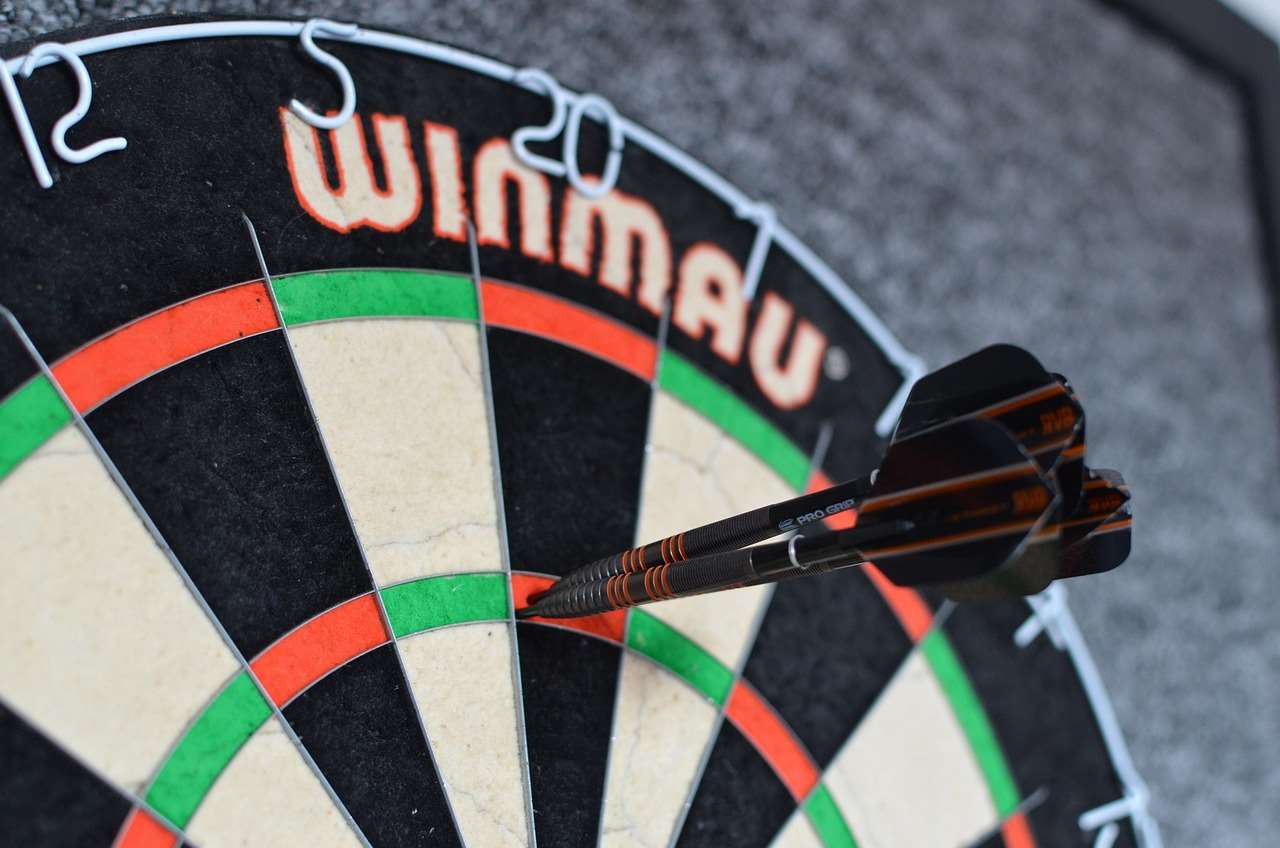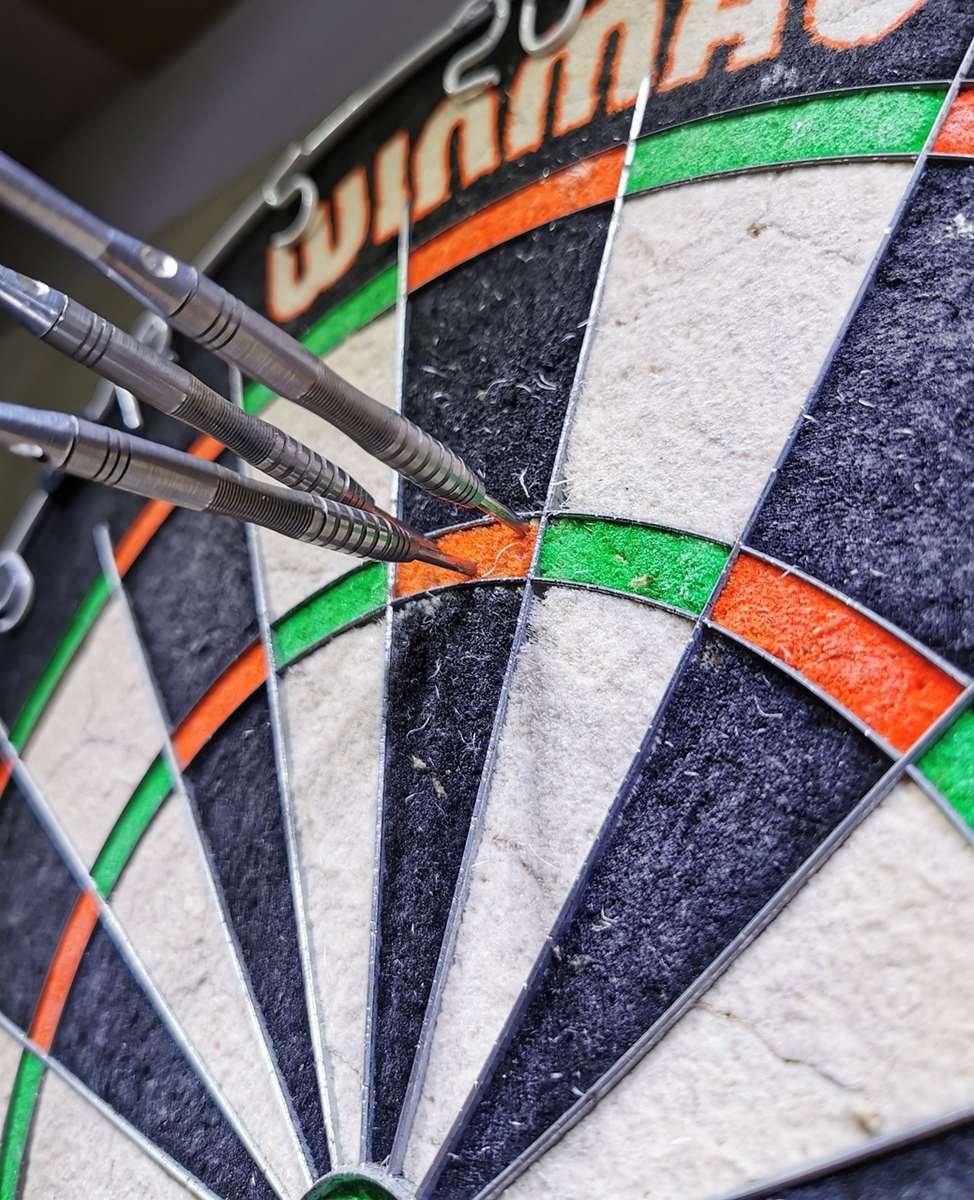Successful darts betting hinges on more than just predicting winners; it demands disciplined bankroll management. This Bankroll Management Darts Betting FAQs guide answers your burning questions about safeguarding your betting funds and maximizing your profits in the long run. We’ll cover setting budgets, calculating stake sizes, and adapting your strategy to both winning and losing streaks.
⚠️ Still Using Pen & Paper (or a Chalkboard)?! ⚠️
Step into the future! The Dart Counter App handles all the scoring, suggests checkouts, and tracks your stats automatically. It's easier than you think!
Try the Smart Dart Counter App FREE!Ready for an upgrade? Click above!
Understanding Bankroll Management: Core Concepts
Bankroll management is the process of managing your betting funds in a responsible and strategic manner. It’s not just about how much you bet, but *how* you bet, and *why*. The primary goal is to protect your capital while simultaneously allowing for potential growth. Think of it as an investment strategy, not a gambling spree. Failing to implement proper bankroll management techniques can quickly deplete your funds, regardless of your darts betting knowledge.
Why is Bankroll Management Crucial for Darts Betting?
Darts, like any sport, is unpredictable. Even the most knowledgeable bettors experience losing streaks. Without a structured approach, these streaks can be devastating. Bankroll management provides a safety net, ensuring you can weather the storms and capitalize on profitable opportunities when they arise. It also helps you avoid emotional betting, a common pitfall for many.

Defining Your Darts Betting Bankroll
Your bankroll is the total amount of money you’ve specifically allocated for darts betting. This should be separate from your everyday expenses and savings. Crucially, it should be money you can afford to lose without significantly impacting your lifestyle. Once you’ve defined your bankroll, stick to it. Don’t be tempted to dip into other funds, even during winning streaks.
Frequently Asked Questions: Bankroll Management Darts Betting FAQs
Let’s dive into some of the most common questions bettors have about bankroll management in the context of darts betting.
How Much of My Bankroll Should I Risk Per Bet?
This is perhaps the most important question. A general rule of thumb is to risk only 1% to 5% of your bankroll on any single bet. Conservative bettors often stick to the lower end (1-2%), while those with a higher risk tolerance might venture up to 5%. Consider your own risk profile and the perceived value of the bet. The article Darts Betting And Fantasy Leagues Guide also covers a lot about betting strategy.
What is Unit Betting and How Does it Relate to Bankroll Management?
Unit betting is a common strategy where you define a “unit” as a fixed percentage of your bankroll. For example, if your bankroll is $1000 and you’re using a 2% staking plan, one unit would be $20. You then express your bets in terms of units (e.g., betting 1 unit, 0.5 units, 2 units). This helps to standardize your stake sizes and maintain consistent risk management.
How Do I Handle Winning Streaks?
Winning streaks are exciting, but it’s important to remain disciplined. Avoid the temptation to increase your stake sizes significantly, as this can quickly erode your profits if the streak ends. Consider increasing your unit size *gradually* as your bankroll grows, but always stick to your predetermined percentage (e.g., 2%). Reinvesting a portion of your winnings to replenish your bankroll is also a smart move.

What Should I Do During a Losing Streak?
Losing streaks are inevitable. Don’t panic and don’t chase your losses. The worst thing you can do is increase your stake sizes in an attempt to recoup your money quickly. Instead, consider reducing your unit size slightly to minimize further losses. It might also be wise to take a break from betting to reassess your strategy and avoid emotional decision-making.
Is Flat Betting the Best Bankroll Management Strategy for Darts?
Flat betting involves betting the same amount on every wager, regardless of the odds or perceived value. While simple, it’s not always the most effective strategy. A more nuanced approach involves adjusting your stake size based on your confidence level and the potential return. However, flat betting can be a good starting point for beginners.
What is the Kelly Criterion and Should I Use it for Darts Betting?
The Kelly Criterion is a mathematical formula that calculates the optimal percentage of your bankroll to bet based on the odds and your perceived probability of winning. While it can be a useful tool, it requires accurate probability assessments, which can be challenging in darts. It’s also considered a more aggressive strategy and may not be suitable for all bettors. Using Player Stats For Darts Bets will help with probability assessment.
How Often Should I Review My Bankroll Management Strategy?
Regular review is essential. At a minimum, you should review your bankroll management strategy monthly. Analyze your betting history, identify areas for improvement, and adjust your staking plan as needed. Consider factors such as your win rate, average odds, and risk tolerance.

Can I Combine Bankroll Management with Other Betting Strategies?
Absolutely! Bankroll management is not a betting strategy itself, but rather a framework for managing your funds while implementing other strategies. You can combine it with value betting, arbitrage betting, or any other approach that aligns with your goals. The key is to ensure that your bankroll management strategy is consistent with your overall betting plan. Furthermore, understanding How To Analyze Dart Player Form can inform your bet selections.
What is the Importance of Record Keeping in Bankroll Management?
Meticulous record-keeping is crucial for effective bankroll management. Track every bet you place, including the date, event, selection, stake size, odds, and outcome. This data will provide valuable insights into your betting performance, helping you identify strengths, weaknesses, and areas for improvement. Good records also help with tax reporting (if applicable).
How Do I Adjust My Bankroll Management Strategy for Different Darts Tournaments?
Different darts tournaments may require adjustments to your bankroll management strategy. For example, tournaments with a higher degree of unpredictability (e.g., those featuring many lower-ranked players) may warrant a more conservative approach with smaller stake sizes. Conversely, tournaments with a more predictable field might allow for slightly larger bets.

What Are Some Common Bankroll Management Mistakes to Avoid?
- Chasing Losses: Increasing your stake sizes after a loss in an attempt to recoup your money quickly.
- Betting Emotionally: Making impulsive bets based on your gut feeling rather than rational analysis.
- Ignoring Variance: Underestimating the impact of luck and randomness on short-term results.
- Over-Betting: Risking too much of your bankroll on a single bet.
- Failing to Keep Records: Not tracking your bets and analyzing your performance.
Advanced Bankroll Management Techniques for Darts Betting
Once you’ve mastered the basics, you can explore more advanced techniques to optimize your bankroll management.
The Martingale System and Why It’s Dangerous for Darts Betting
The Martingale system involves doubling your stake after every loss, with the idea that you’ll eventually win and recoup your losses. While it might seem appealing, it’s extremely risky and can quickly deplete your bankroll, especially during long losing streaks. The potential rewards are small compared to the significant risk involved, making it unsuitable for darts betting.
Using Staking Plans: Proportional vs. Fixed
Beyond flat betting, you can explore more sophisticated staking plans. A proportional staking plan adjusts your stake size based on the perceived edge you have in a particular bet. For instance, you might bet a higher percentage of your bankroll on bets where you believe you have a significant advantage. A fixed staking plan, as discussed, uses a fixed percentage of the bankroll per bet.

Incorporating Expected Value (EV) into Your Bankroll Management
Expected Value (EV) is a measure of the long-term profitability of a bet. Calculate the EV of each bet you place and prioritize those with a positive EV. By focusing on bets with a positive EV, you increase your chances of long-term success and optimize your bankroll management.
Furthermore, stay up-to-date on factors that can impact player performance, such as Analyzing Dart Player Form Statistics, which can significantly help with making informed betting decisions.
Conclusion
Mastering bankroll management is paramount for long-term success in darts betting. By setting a budget, calculating appropriate stake sizes, tracking your bets, and adapting your strategy to both winning and losing streaks, you can protect your capital and maximize your profits. Remember, it’s a marathon, not a sprint. Implement these Bankroll Management Darts Betting FAQs guidelines today, and watch your betting performance improve. Start by defining your bankroll and tracking every bet! For further reading, check out our guide on Player Statistics For Darts Betting.
Hi, I’m Dieter, and I created Dartcounter (Dartcounterapp.com). My motivation wasn’t being a darts expert – quite the opposite! When I first started playing, I loved the game but found keeping accurate scores and tracking stats difficult and distracting.
I figured I couldn’t be the only one struggling with this. So, I decided to build a solution: an easy-to-use application that everyone, no matter their experience level, could use to manage scoring effortlessly.
My goal for Dartcounter was simple: let the app handle the numbers – the scoring, the averages, the stats, even checkout suggestions – so players could focus purely on their throw and enjoying the game. It began as a way to solve my own beginner’s problem, and I’m thrilled it has grown into a helpful tool for the wider darts community.